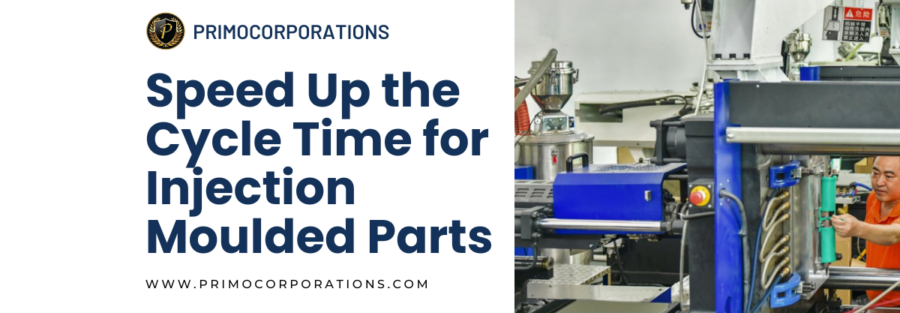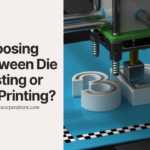Cycle time has a direct impact on part cost and capacities which is why engineers and project managers want to keep it low. When reaching out to various injection moulders for parts, they may be faced with divergent cycle time estimates.
Unfortunately, there is no easy way for an injection moulder to determine the cycle time. Before getting discouraged, rest easy, an injection moulding partner with wide-ranging expertise in scientific moulding can more realistically quote projects. In addition, an experienced injection moulder can predict factors that may increase cycle time and prevent them.
So what exactly is cycle time?
In injection moulding, cycle time refers to the time it takes to complete a full production cycle of a particular mould. Cycle time is an important measure of performance in injection moulding, because it determines how quickly a particular mould can produce parts. A shorter cycle time means the mould can produce parts quicker. Total cycle time includes the time required for the injection moulding machine to inject molten plastic into the mould, cool the plastic until it is solid, open the mould and eject the finished part.
Wall Thickness
The thicker the wall the longer the time required for the plastic part to go from a molten state to being rigid enough to eject. If the wall thickness can be made thinner without affecting its strength, costs can likely be cut.
Plastic Type
The plastic material’s chemical composition is another significant factor in cycle time calculations. Certain polymers don’t solidify as quickly as other plastics. If these certain polymers are chosen for constructing an injection moulded part, the extra time to cure results in longer times in the mould cavity, thus extended cycle times.
Part Design
During the design phase, it may be a good idea to include the injection moulder. An experienced injection moulder would be knowledgeable about certain design parameters that may drive up cooling times. They would be able to provide invaluable guidance through the design phase.
Mould Material
Steel is the most commonly used mould material used in injection moulding machines. However, there are occasions where heat must leave the moulded plastic faster than steel would allow. In this case, aluminum or other highly conductive metals may be inserted without interrupting moulding or delaying cycle times.
Mould Cooling Design
Proper mould cooling design can help to increase the efficiency of the injection moulding process by reducing cycle times. Designing the mould to include cooling lines to cool the moulded plastic is a common solution used by injection moulders. Injection moulders that have experienced these challenges before may encourage the use of cooling lines or changes to cooling design systems, water temperatures, or flow rates to optimize the moulding cycle.
You Need Someone Who Pays Attention
In conclusion, injection moulders that pay attention to the above mentioned factors will be more effective in keeping cycle times low. This is beneficial for you because you can have increased capacity at decreased costs. Even more, accurate estimations can give mass manufacturers confidence in their production timelines. When you’re looking for accurate estimations, an experienced injection moulder who is highly knowledgeable in plastic part design, is key.
Choose a Professional Injection Moulder, Choose PRIMO Corporations
Primo Corporations offers a number of comprehensive engineering services and large scale manufacturing of products including injection moulding. To learn how we can apply our expertise to your next project, contact us today.





